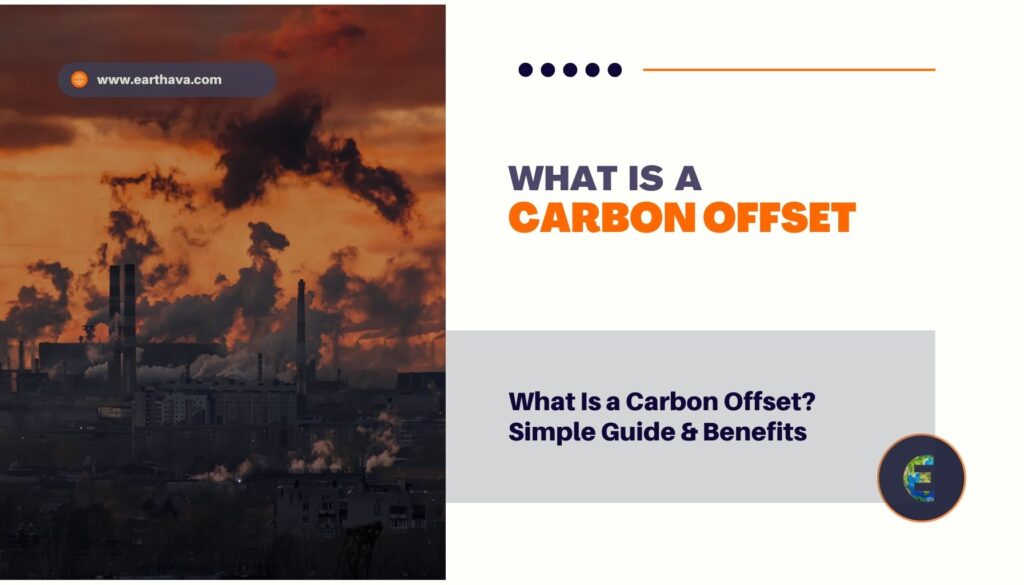Almost everything produces some form of carbon footprint. Whether it’s taking a plane that uses fossil fuels or something more subtle, like buying from unsustainable fashion brands, carbon is everywhere. To try and curb these emissions, many individuals and companies turn to carbon offsetting. These programs come with long-term benefits, but you should remember some things before investing.

What Is a Carbon Offset?
Carbon capture and storage is a technology that involves the collection of carbon dioxide emissions as they are produced, essentially preventing them from entering and building up in the Earth’s atmosphere.
The idea of offsetting carbon emissions comes from the need to reduce the greenhouse gas effect and the overall climate crisis. Some scientists have put a clock on how long the world has to act before the climate crisis becomes irreversible.
Since it can be challenging to avoid having a carbon footprint altogether, offsetting these emissions has become a popular path to pursue. You calculate your total carbon footprint, then buy or invest in projects that offset that footprint equally. These projects can take several forms — from capturing carbon through planting trees to switching to renewable energy to storing carbon securely.
An offset certificate represents the reduction of a metric ton of carbon. That way, whatever carbon you contribute to the atmosphere, you can offset it in some way.
Who Uses Offset Programs?
If you’re unsure if using carbon offset programs is right for you, don’t worry. Everyone can find a program that fits their footprint level and that lines up with their sustainable values. In recent years, offset programs have become more popular than ever.
Commonly, you’ll see big companies and corporations committing to carbon offset programs. These corporations often contribute to high levels of carbon emissions — these projects are ways to curb those levels. For instance, Delta Air Lines has committed to offsetting programs in the past, but is now pushing the boundaries to actively reduce carbon in the atmosphere instead of solely balancing it out.
Individuals, too, can take on these projects. Every step makes a difference when it comes to fighting the climate crisis. It’s critical, though, to know the benefits and drawbacks of offset programs first.
The Pros and Cons
Knowing how to navigate the vast field of offset programs is necessary. While you’ll find plenty of effective projects, carbon offsetting can get more complicated. For instance, the idea of offsetting solely means that an individual or business is balancing out the emissions they release without reducing them.
While offsetting has benefits, it’s crucial to focus on immediate solutions as well. A major corporation planting trees to offset carbon in several years isn’t as effective as immediately switching to renewable energy. Further, the trees run the risk of deforestation in the future as well.
Some offset programs can be impractical for the average person, too. If they’re too expensive, it becomes an unrealistic field to invest in. Solutions like switching to renewable energy and using energy-saving tech and appliances in your home become more practical. However, you can find a balance.
A Balancing Act
Investing in a carbon offset program is still a viable option if you find the right one. First and foremost, you can use a carbon footprint calculator to know how much you want to offset. When you have that number, look for a program that’s transparent and direct about its actions and solutions.
For instance, you’ll want a program that lays out where investments go and how it plans to offset carbon. You can determine its effectiveness from there. If the organization is vague and speaks generally about goals, it might not be the best project to be part of.
With plans like capturing and storing carbon or funding renewable energy in the present, you can be sure that the program is striving for change and not surface-level facades.
The Future of Offsetting
To improve the field of offsetting, programs should focus on both immediate and long-term solutions. With paths for things like renewable energy, adding more green to the world, and actively removing carbon, programs can then be truly effective.


